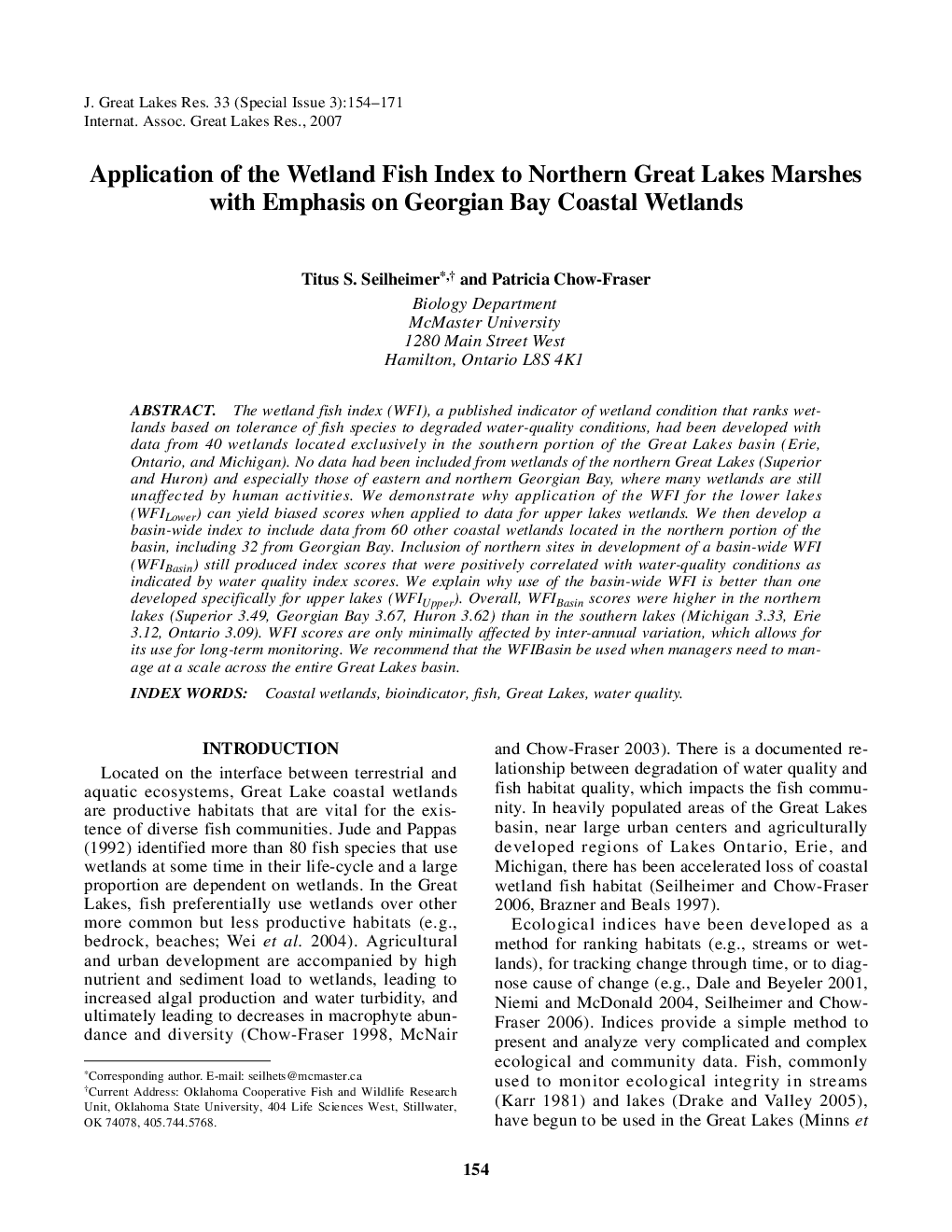| کد مقاله | کد نشریه | سال انتشار | مقاله انگلیسی | نسخه تمام متن |
|---|---|---|---|---|
| 4399455 | 1306746 | 2007 | 18 صفحه PDF | دانلود رایگان |
عنوان انگلیسی مقاله ISI
Application of the Wetland Fish Index to Northern Great Lakes Marshes with Emphasis on Georgian Bay Coastal Wetlands
دانلود مقاله + سفارش ترجمه
دانلود مقاله ISI انگلیسی
رایگان برای ایرانیان
کلمات کلیدی
موضوعات مرتبط
مهندسی و علوم پایه
علوم زمین و سیارات
علوم زمین و سیاره ای (عمومی)
پیش نمایش صفحه اول مقاله

چکیده انگلیسی
The wetland fish index (WFI), a published indicator of wetland condition that ranks wetlands based on tolerance of fish species to degraded water-quality conditions, had been developed with data from 40 wetlands located exclusively in the southern portion of the Great Lakes basin (Erie, Ontario, and Michigan). No data had been included from wetlands of the northern Great Lakes (Superior and Huron) and especially those of eastern and northern Georgian Bay, where many wetlands are still unaffected by human activities. We demonstrate why application of the WFI for the lower lakes (WFILower) can yield biased scores when applied to data for upper lakes wetlands. We then develop a basin-wide index to include data from 60 other coastal wetlands located in the northern portion of the basin, including 32 from Georgian Bay. Inclusion of northern sites in development of a basin-wide WFI (WFIBasin) still produced index scores that were positively correlated with water-quality conditions as indicated by water quality index scores. We explain why use of the basin-wide WFI is better than one developed specifically for upper lakes (WFIUpper). Overall, WFIBasin scores were higher in the northern lakes (Superior 3.49, Georgian Bay 3.67, Huron 3.62) than in the southern lakes (Michigan 3.33, Erie 3.12, Ontario 3.09). WFI scores are only minimally affected by inter-annual variation, which allows for its use for long-term monitoring. We recommend that the WFIBasin be used when managers need to manage at a scale across the entire Great Lakes basin.
ناشر
Database: Elsevier - ScienceDirect (ساینس دایرکت)
Journal: Journal of Great Lakes Research - Volume 33, Supplement 3, 2007, Pages 154-171
Journal: Journal of Great Lakes Research - Volume 33, Supplement 3, 2007, Pages 154-171
نویسندگان
Titus S. Seilheimer, Patricia Chow-Fraser,